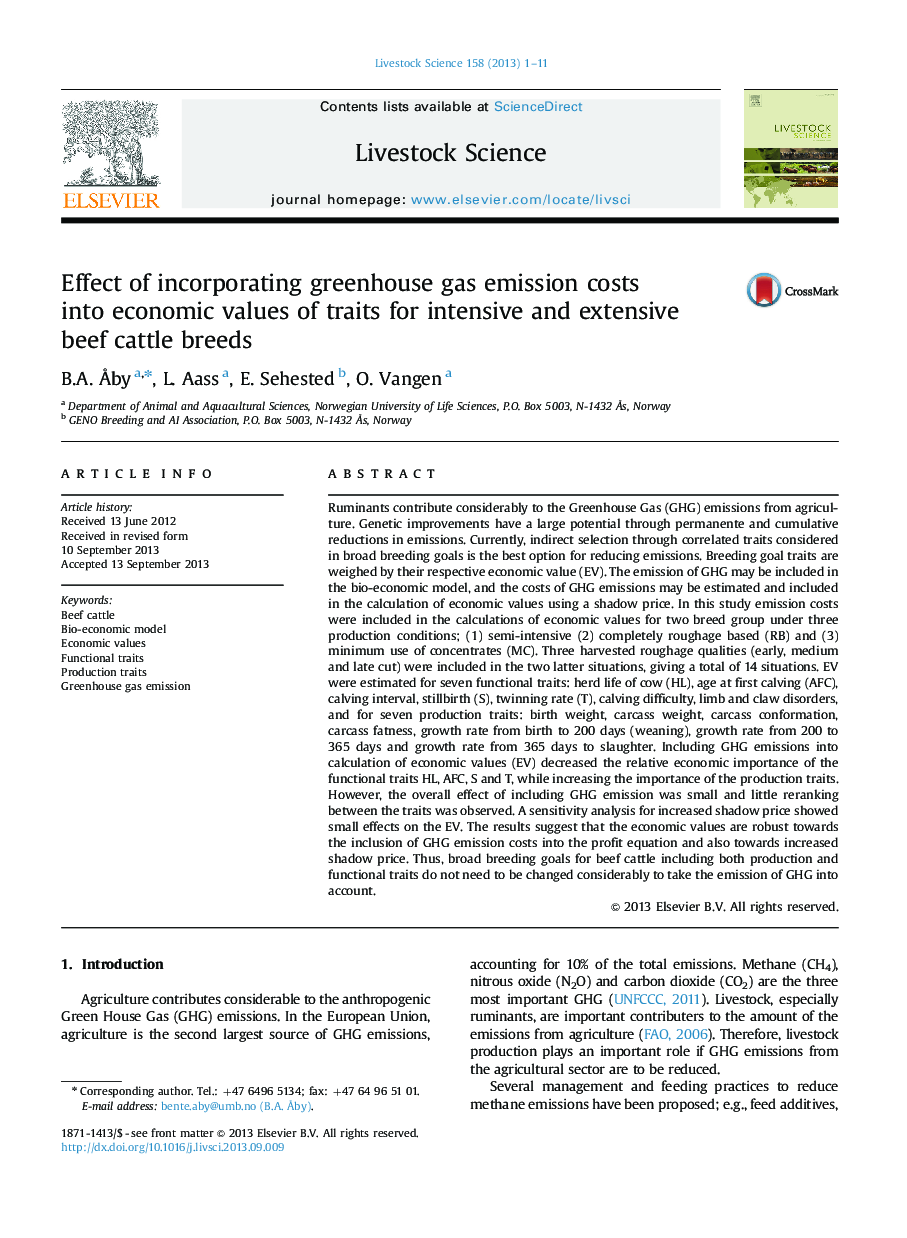| Article ID | Journal | Published Year | Pages | File Type |
|---|---|---|---|---|
| 5790285 | Livestock Science | 2013 | 11 Pages |
Abstract
Ruminants contribute considerably to the Greenhouse Gas (GHG) emissions from agriculture. Genetic improvements have a large potential through permanente and cumulative reductions in emissions. Currently, indirect selection through correlated traits considered in broad breeding goals is the best option for reducing emissions. Breeding goal traits are weighed by their respective economic value (EV). The emission of GHG may be included in the bio-economic model, and the costs of GHG emissions may be estimated and included in the calculation of economic values using a shadow price. In this study emission costs were included in the calculations of economic values for two breed group under three production conditions; (1) semi-intensive (2) completely roughage based (RB) and (3) minimum use of concentrates (MC). Three harvested roughage qualities (early, medium and late cut) were included in the two latter situations, giving a total of 14 situations. EV were estimated for seven functional traits: herd life of cow (HL), age at first calving (AFC), calving interval, stillbirth (S), twinning rate (T), calving difficulty, limb and claw disorders, and for seven production traits: birth weight, carcass weight, carcass conformation, carcass fatness, growth rate from birth to 200 days (weaning), growth rate from 200 to 365 days and growth rate from 365 days to slaughter. Including GHG emissions into calculation of economic values (EV) decreased the relative economic importance of the functional traits HL, AFC, S and T, while increasing the importance of the production traits. However, the overall effect of including GHG emission was small and little reranking between the traits was observed. A sensitivity analysis for increased shadow price showed small effects on the EV. The results suggest that the economic values are robust towards the inclusion of GHG emission costs into the profit equation and also towards increased shadow price. Thus, broad breeding goals for beef cattle including both production and functional traits do not need to be changed considerably to take the emission of GHG into account.
Keywords
Related Topics
Life Sciences
Agricultural and Biological Sciences
Animal Science and Zoology
Authors
B.A. Ã
by, L. Aass, E. Sehested, O. Vangen,
